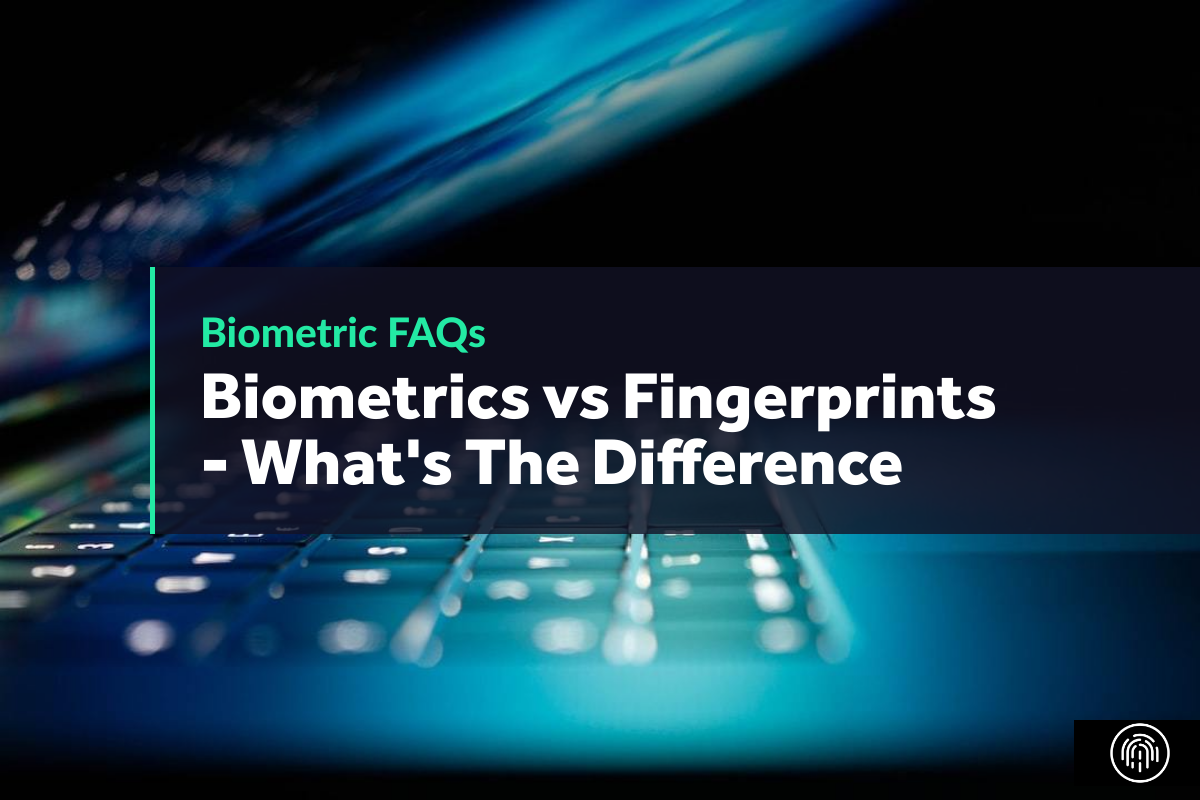In this article we’re going to be discussing the differences between biometrics and fingerprint recognition.
Whilst we’re going to answer the question more in-depth further below, let’s first summarise:
Biometrics vs Fingerprints – What’s the difference?
Biometrics is the use of physical or behavioral characteristics to identify a person.
Fingerprints are one type of biometric, but there are others, such as iris recognition and facial recognition. Fingerprints are unique to each individual and can be used to verify identity.
Fingerprint vs Vascular biometrics – Are they different?
Biometrics is the use of physical or behavioral characteristics to identify individuals. Fingerprint and vascular biometrics are two different types of biometric technologies.
Fingerprints are made up of the ridges and valleys on the surface of the skin on the parts of the hand. Vascular biometrics uses the pattern of veins in the hand for identification purposes.
Both fingerprint and vascular biometrics have been used for identification purposes for many years. However, as technology evolves, so do the ways in which we can use biometrics for identification.
What are biometrics and what is biometric data used for?
Biometrics refers to the identification of individuals using their physical or behavioral characteristics. Common examples of biometrics include fingerprints, iris scans, and facial recognition. Biometric data is used to verify an individual’s identity and compare it with other records in a database, as a means of security. This technology is often used to authenticate users and prevent unauthorized access.
What are fingerprint biometrics and what is fingerprint data used for?
Fingerprint biometrics is a technology that uses fingerprints to identify individuals. A fingerprint scanner is used to capture an individual’s specific characteristics, which are then filtered and encrypted into a biometric key. This key can be used to identify the individual, as well as to authenticate their identity.
How fingerprint biometrics work
Fingerprint biometrics work by scanning a person’s fingerprint and then creating a digital image of it. This digital image is then stored in a database. When someone wants to access something that is protected by fingerprint biometrics, they must scan their fingerprint again. This new scan is then compared to the images in the database. If there is a match, then the person is allowed access. If there is not a match, then the person is not allowed access.
Fingerprints are made up of many different specific characteristics. When a fingerprint is scanned, these characteristics are filtered out and a mathematical representation of the fingerprint is created. This mathematical representation is then turned into an encrypted biometric key.
Where fingerprint biometrics is used
Fingerprint biometrics is used in a variety of settings, from access control to identity verification. When used for access control, a fingerprint scanner is used to authenticate an individual’s identity and grant them access to a particular area. For identity verification, biometrics is used to identify an individual and verify their identity. This can be done by matching the fingerprint against a stored biometric or by using a fingerprint scanner to verify the identity of the individual.
Benefits of fingerprint biometrics
Fingerprint biometric technology is becoming increasingly popular because it is more secure than passwords and other forms of authentication. Firstly, fingerprints are unique to each individual, so they can be used to verify someone’s identity with a high degree of accuracy (unlike passwords which can be shared). Additionally, fingerprint biometrics is difficult to spoof, so it is more secure than other biometric technologies.
Types of biometric authentication
Biometric authentication is a process of identifying an individual based on their physical or behavioral characteristics. Common biometrics include fingerprints, irises, veins, and facial features. To authenticate someone using biometric data, a scan is first taken of the individual’s unique characteristic. This scan is then compared to a stored template using an algorithm. If the two match, the individual is verified and allowed access. If not, they are denied access. Biometric authentication is often used as an extra layer of security, in addition to traditional methods like passwords and ID cards.
Are all types of biometrics equally valid?
Biometrics are a type of identification that uses physical or behavioral characteristics to verify someone’s identity. There are many different types of biometrics, including iris recognition, fingerprinting, vein recognition, and behavioral characteristics. facial recognition is also a type of biometric. According to the Biometrics Institute there are 16 types which exist currently.
Not all biometrics are equally valid. Some biometrics, such as iris recognition, are more accurate than others, such as fingerprinting. The accuracy of a biometric depends on the quality of the database and the technology used to compare the biometric to the database. The accuracy of a biometric also depends on the algorithm used to identify the person.

